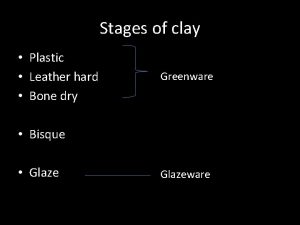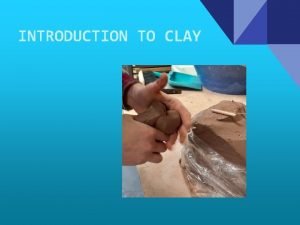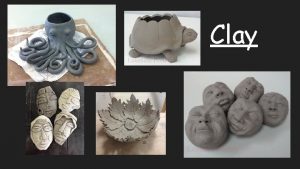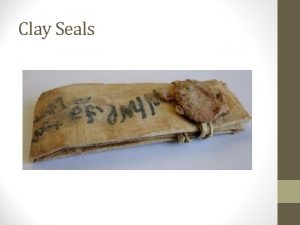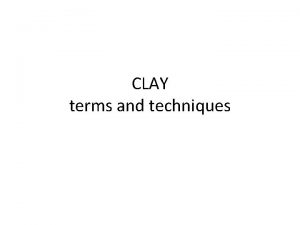THE 7 STAGES OF CLAY STAGE 1 RAW








- Slides: 8

THE 7 STAGES OF CLAY

STAGE 1: RAW CLAY This is clay in its raw, natural state when dug up from the ground. The color and working properties depend on the location where it is found and the minerals and impurities present in the clay.

STAGE 2: SLIP Clay that is in semi-liquid form is called Slip. It can be poured into molds or used as glue to bind two pieces of moist clay together.

STAGE 3: WET CLAY (PREPARED) Prepared clay (wet clay) has been processed to remove most air bubbles and impurities. Various additives have been included to make it more malleable, fire more evenly, etc. Wet clay is also known as Plastic clay because this is the stage where it is easiest to Work.

STAGE 4: LEATHER HARD When clay has dried to a point where it holds its form but maintains a degree of moisture so that it feels and works like a piece of leather it is called leather hard. Although it's still semi moist it is strong enough to support itself and keep its shape when pressure is applied. This is the stage where designs can be carved or a handle added.

STAGE 5: GREENWARE (BONE DRY) Greenware is when clay is completely air dried, and since Greenware is basically dried mud any contact with water will return it to its wet or slip stage. This stage is also when a clay piece is in its most fragile state; a tiny nudge could easily damage the piece. Clay must pass through this drying stage before it can be put in the kiln for its initial bisque firing. Any excess moisture left in a piece will expand into steam in the kiln and destroy the work.

STAGE 6: BISQUE FIRE Bisque clay is clay that has undergone a first firing in a kiln. After about 660 degrees the heat begins to evaporate the last molecules of water. When the kiln temperature reaches the maturing point of the clay (c. 1888 degrees for earthenware) it transforms it into ceramic material. At this stage it can no longer be affected by water nor changed in any way. However, it is still porous and will not hold water for very long. Bisque is the preparatory stage for glazing.

STAGE 7: GLAZE FIRE Once your piece has been Bisque fired it needs to be glazed and fired again to enable it to hold liquids. Unlike paint, glazes cannot be mixed to create secondary colors. Glazes are chemical/mineral formulae that mature at a specific temperature to create a glassy coating in the desired color. Mixing them corrupts the formula and creates unpredictable results.



